Please explore the children's learning for Number and Place Value, Addition and Subtraction, Multiplication and Division, Fractions, Measures and Geometry.
Number and Place Value
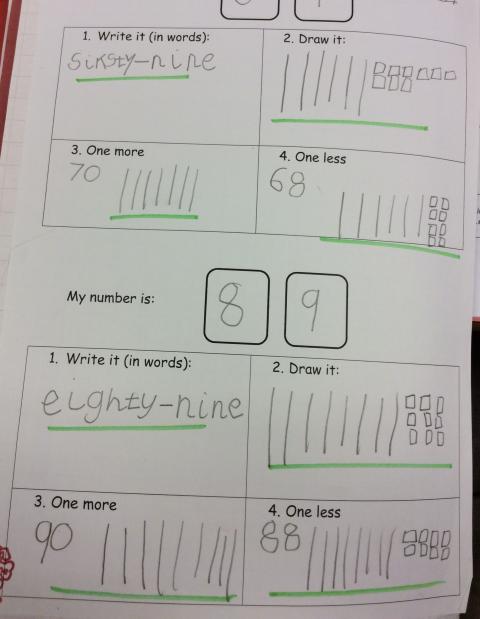
Context: The pupils practised partitioning numbers using objects. During the activity they were offered 10 and 1 dienes or bundled and loose straws to represent the object. This activity took place at the end of the first week of the school year.
The pupil was happy to use drawings to represent each of the numbers. Using drawings, they were also able to show one more and one less of each number. As a regular warm up activity, pupils were asked to complete this grid, also showing 10 more and 10 less. The pupil was able to complete this comfortably using drawings.
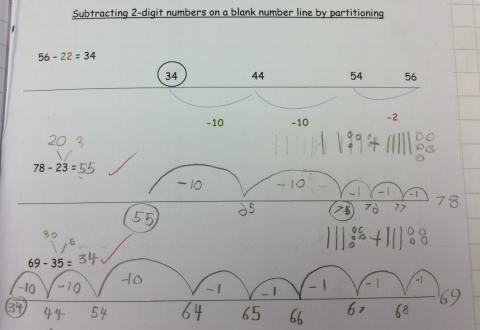
Context: The pupils initially used a marked number line to carry out subtractions and then progressed to using blank number lines to show their calculating.
This pupil worked independently with confidence and fluency to show their steps of counting back in 10s and 1s. Above each number that they are subtracting, they showed the partitioning of the 2-digit number into tens and ones.
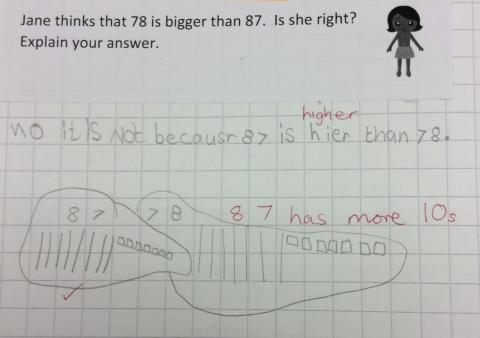
Context: The pupils were asked to demonstrate their understanding of place value using this question. It was given to pupils as a mastery question in the first week of the school year.
Although this child has shown the difference between the two numbers and explained this verbally, they have provided no written evidence of this. To clearly exemplify working at the expected level, I would like to see a description that, for example, said, “87 has 8 tens and 7 ones. 78 has 7 tens and 8 ones. 87 has more tens therefore it is larger.
Addition and Subtraction
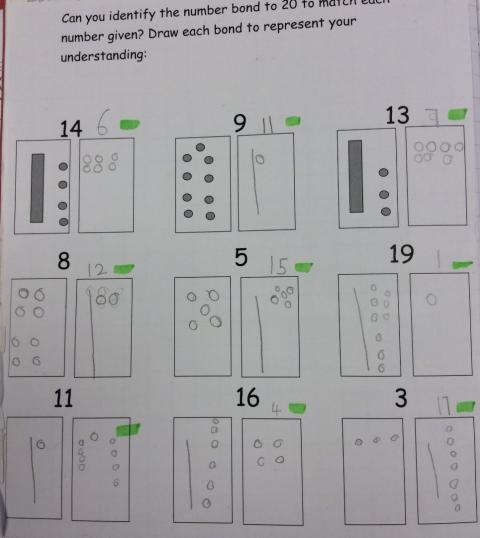
Context: The children were asked to use their knowledge of number bonds to 10 and relate this to working out the number bond to 20. They were also asked to represent their numbers in drawings.
The child worked independently to find the other number that totaled 20. They used their knowledge of number bonds to 10 to do this. They were making comments about knowing 8 and 2 make 10 so 8 and 12 makes 20. When asked what if the number they were given was 2 the child told the teacher it was the other way round. This showed they understood that 2 and 18 makes 20 the same as 18 and 2 makes 20. The child also shows their understanding of place value as they can represent each number clearly as an image.
The child would then write these images as calculations to show they understand this as written form e.g. 16 + 4 = 20
The pupil can add and subtract any 2 two-digit numbers using an efficient strategy, explaining their method verbally, in pictures or using apparatus (e.g. 48 + 35; 72 – 17)
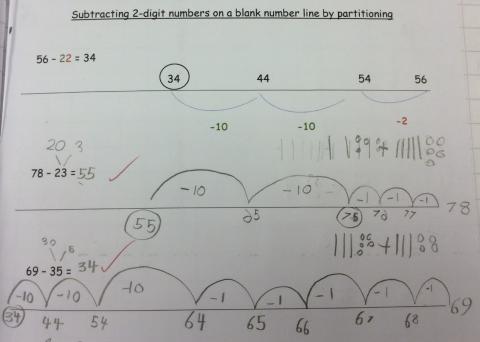
Context: The children had been learning to subtract two 2-digit numbers and a discussion was had about partitioning the second number to help with this.
The child was asked to complete these sums using the method of a blank number line as an efficient strategy. They independently partitioned the second number, making this visible on their work. They then subtracted in ones first followed by tens. They have clearly drawn their steps on the blank number line and correctly arrived at the answers at each step. They have shown they understand subtraction as the inverse of addition as they have checked their answer by drawing tens and ones.
